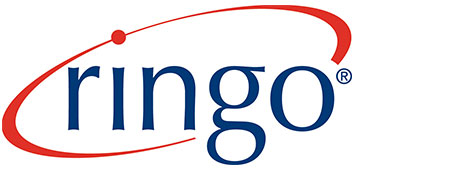10 Key Ways to Maximize Opportunities with a VMS

Capturing opportunities in the healthcare market with a Vendor Management System (VMS) like Ringo requires a strategic approach that leverages the technology to meet the unique needs of healthcare organizations. Here are ten key ways to capture and maximize opportunities using a VMS.
1. Streamline Contingent Labor Management
Healthcare organizations rely heavily on contingent labor (e.g., temporary nurses, travel staff, per diem professionals) to meet staffing demands, especially during peak times or shortages. A VMS simplifies the process by automating the sourcing, onboarding, scheduling, and credentialing of contingent workers. This allows healthcare facilities to:
- Quickly respond to staffing needs and reduce time-to-fill critical roles.
- Optimize labor costs by ensuring competitive vendor bidding and preventing overstaffing or overtime.
- Improve workforce flexibility by easily adjusting labor levels based on real-time demand.
2. Enhance Compliance and Credentialing
Compliance with healthcare regulations and credentialing requirements is crucial. A VMS ensures that all contingent staff meet the necessary qualifications and certifications before they begin working. This helps healthcare providers:
- Mitigate legal and regulatory risks by ensuring all workers meet state and federal requirements.
- Avoid fines and penalties associated with non-compliance or expired credentials.
- Maintain high standards of care by ensuring only qualified professionals are in patient-facing roles.
3. Improve Workforce Efficiency and Productivity
A VMS can reduce administrative burdens by up to 60%, freeing up HR and administrative staff to focus on strategic initiatives rather than time-consuming manual processes. This increases overall operational efficiency by:
- Automating repetitive tasks, such as invoicing, timesheets, and shift scheduling.
- Providing real-time data on workforce performance allows healthcare managers to make informed decisions.
- Optimizing staffing levels and ensuring the right staff is in place to meet patient care needs.
4. Access to Data-Driven Insights
One of the biggest opportunities in healthcare is using data to drive smarter decisions. A VMS provides healthcare organizations with detailed reporting and analytics on labor trends, costs, and performance. This allows healthcare providers to:
- Identify cost-saving opportunities by analyzing labor spend, staffing patterns, and overtime.
- Benchmark performance against industry standards, ensuring the facility is operating efficiently.
- Forecast future staffing needs, using historical data to predict demand spikes and plan ahead for them.
5. Increase Vendor Competition
A vendor-neutral VMS, like Ringo, fosters competition among staffing agencies by providing a transparent marketplace for contingent labor. This drives down costs and improves service quality by:
- Encouraging competitive bidding from multiple vendors, helps control costs.
- Ensuring access to the best talent, as vendors compete to offer the most qualified candidates.
- Reducing dependency on a single staffing agency, giving healthcare organizations more flexibility and options.
6. Faster, More Efficient Onboarding
A VMS enables rapid onboarding of healthcare professionals, ensuring that facilities are never understaffed. By automating the credentialing and onboarding process, healthcare providers can:
- Reduce onboarding time and ultimately increase redeployment rates.
- Ensure a simplified compliance process for their healthcare professionals.
- Decrease administrative overhead, allowing HR to focus on direct hires and other essential tasks.
7. Focus on Patient Care
By automating labor management, a VMS allows healthcare organizations to reallocate resources toward their core mission—delivering excellent patient care. The reduction in administrative tasks means that:
- Nurses and doctors can focus on patient care, rather than paperwork or managing shift schedules.
- HR teams can focus on hiring and retaining permanent staff, while the VMS manages the contingent workforce.
- Healthcare administrators can devote more attention to improving care quality, patient satisfaction, and operational efficiency.
8. Expand into Rural or Underserved Markets
Healthcare facilities in rural or underserved areas often face unique staffing challenges. A VMS helps capture opportunities in these markets by:
- Providing access to a wider pool of contingent labor, helping fill gaps in rural hospitals and clinics.
- Optimizing resource allocation, ensuring that even small facilities can maintain appropriate staffing levels.
- Improving workforce scalability, making it easier to adjust staffing levels based on patient volume and facility needs.
9. Improve Financial Management
A VMS enables better financial management by offering real-time visibility into labor costs, including hidden expenses such as overtime, shift differentials, and contractor fees. This can help healthcare organizations:
- Reduce unnecessary costs, such as overtime or duplicate staffing.
- Optimize the use of contingent labor, ensuring the right balance between permanent and temporary workers.
- Improve financial forecasting, providing better control over budgets and labor spend.
10. Stay Competitive in a Tight Labor Market
With increasing competition for healthcare talent, a VMS helps healthcare providers stay ahead by:
- Quickly filling staffing gaps and ensuring qualified professionals are always available.
- Leveraging advanced AI tools to match the right candidates with the right roles more effectively.
- Ensuring quality patient care, enhances the facility's reputation and attractiveness to both patients and staff.
By implementing a vendor-neutral VMS like Ringo, healthcare organizations can seize numerous opportunities to improve efficiency, cut costs, and optimize their workforce. A well-implemented VMS helps healthcare providers navigate the complex labor market, enhance compliance, and improve patient care—all while reducing the administrative burdens on hospital staff. With the power of AI and automated workflows, Ringo allows healthcare organizations to capture new growth opportunities and stay competitive in an ever-evolving industry.



